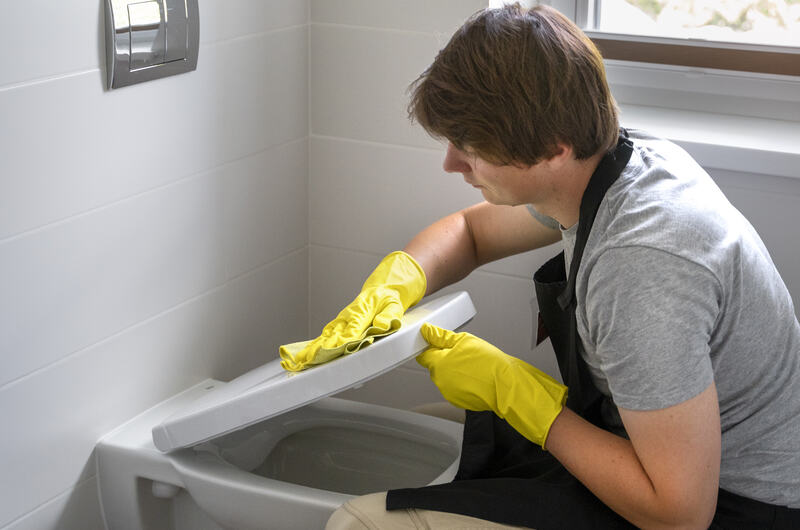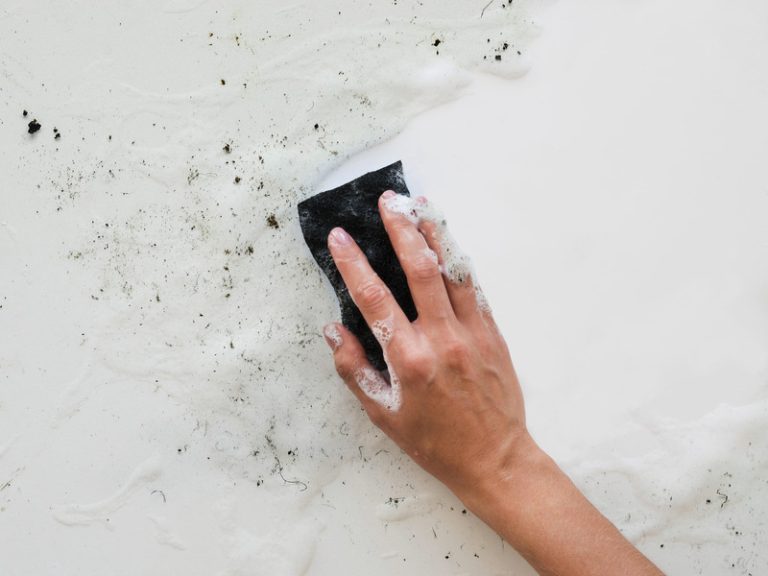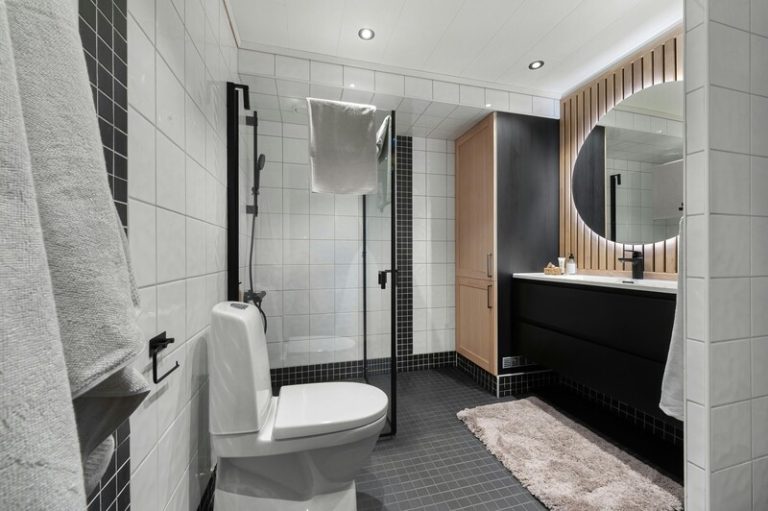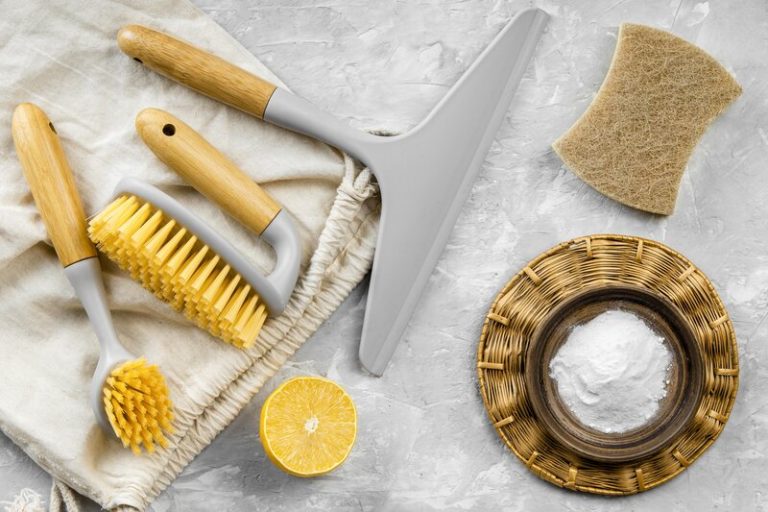Are you tired of dealing with a dirty toilet that doesn’t look sparkling, no matter how often you clean it? Well, it might be time for a toilet deep cleaning.
Discover the tools and products you’ll need in this article. From toilet brushes to vinegar and baking soda, we’ve got you covered. Discover a step-by-step toilet deep cleaning guide and tips for keeping it clean.
Tools and Products Needed for Toilet Deep Cleaning
To thoroughly clean a toilet effectively, you’ll need a variety of cleaning tools and products, including:
a. Toilet Brush
A toilet brush is a fundamental tool for scrubbing away stains and limescale from the toilet bowl, including hard-to-reach areas like the siphon jets.
When selecting a high-quality toilet brush, look for durable bristles that are tough on grime but gentle on the porcelain surface. The handle should be ergonomic, providing a comfortable grip and allowing for easy manoeuvring inside the bowl.
Effective toilet brushes often come with a holder to keep them hygienically stored when not in use, preventing cross-contamination.
b. Toilet Cleaner
A quality toilet cleaner is essential for disinfecting the toilet and eradicating bacteria and viruses. Not only do these potent cleaners eradicate stubborn stains and odours, but they also provide a thorough clean that helps prevent the spread of germs and diseases.
Regular use of a strong toilet cleaner ensures that your bathroom remains fresh and hygienic for you and your family. There are various types of toilet cleaners available, ranging from traditional bleach solutions to foaming gels and environmentally friendly options.
c. Rubber Gloves
Wearing rubber gloves during toilet cleaning tasks is essential for protecting your hands from bacteria, germs, and harsh cleaning chemicals.
Not only do rubber gloves act as a physical barrier against potential infections, but they also prevent direct contact with strong chemicals that can cause skin irritation or allergic reactions.
By wearing rubber gloves, you reduce the risk of exposing your skin to harmful substances present in cleaning agents, ensuring better personal hygiene.
These gloves are particularly important for individuals with sensitive skin or allergies, as they offer an added layer of protection against irritating elements.
d. Scrubbing Brush
A scrubbing brush is an essential cleaning tool for removing hard water stains and toilet rings from the bowl’s surface.
Besides tackling tough stains, a quality scrubbing brush can reach deep into crevices and corners that might be challenging to clean with regular tools. The bristles provide the necessary abrasion without scratching or damaging the surface, ensuring a thorough cleaning without causing any harm.
When choosing a scrubbing brush, consider the handle design for a comfortable grip and manoeuvrability. Opt for brushes with durable and sturdy bristles that can withstand repeated use on tough stains. Look for brushes specifically designed for bathroom cleaning, as they are often more effective in combating hard water stains and mineral deposits.
e. Microfiber Cloths
Microfibre cloths are perfect for wiping down the exterior surfaces of the toilet, providing a streak-free finish. Mariah Thomas from Women’s Health recommends using them with cleaning products for best results.
These versatile clothes have become a staple in the cleaning armoury of households and professional cleaners alike. Their ultra-fine fibres are highly absorbent, allowing them to pick up dirt, grime, and bacteria efficiently. Due to their lint-free nature, they leave no residue behind, leaving surfaces looking pristine.
Not only do microfibre cloths excel at cleaning without the need for harsh chemicals, but they are also durable and reusable. This not only makes them an eco-friendly choice but also a cost-effective one in the long run, reducing the need for disposable wipes or kitchen rolls.
f. Vinegar
Vinegar, particularly white vinegar, is an excellent natural cleaning agent for disinfecting and removing limescale and mineral deposits in the toilet bowl.
Not only does vinegar help to kill germs and bacteria due to its acidic nature, but it also breaks down the stubborn build-up of limescale and mineral deposits effortlessly. Additionally, vinegar is a cost-effective and environmentally friendly cleaning solution, eliminating the need for harsh chemicals.
To utilise vinegar effectively in your cleaning routine, simply mix it with water in a spray bottle and use it to wipe down surfaces or soak affected areas. For tougher limescale, you can apply vinegar directly onto the surface and let it sit for a few hours before scrubbing.
g. Baking Soda
Bicarbonate of soda is a versatile cleaning agent that helps with scrubbing away stains and deodorising the toilet bowl.
One of the main uses of bicarbonate of soda in toilet cleaning is for tackling tough stains. You can make a paste by mixing bicarbonate of soda with water and applying it to the stained areas. Let it sit for a while before scrubbing it off, and you’ll notice how effective bicarbonate of soda is at removing stubborn marks.
Plus stain removal, bicarbonate of soda also works wonders as a natural deodoriser. Simply sprinkle some bicarbonate of soda into the toilet bowl and let it sit for a few minutes before flushing. This helps to neutralise odours and leaves your bathroom smelling fresh.
For regular maintenance, you can sprinkle bicarbonate of soda around the toilet bowl and use a toilet brush to scrub the surfaces. This not only helps in cleaning but also adds an extra layer of freshness to your bathroom. Feel free to use bicarbonate of soda in various cleaning tasks to enjoy its versatile benefits in keeping your toilet clean and smelling great.
Step by Step Toilet Deep Cleaning
Deep cleaning of a toilet involves a systematic process that ensures thorough cleaning and disinfection of the toilet bowl, seat, and exterior surfaces to remove bacteria and germs effectively. To make it easier, follow this step-by-step toilet deep cleaning checklist:
a. Gather Your Supplies
Before starting the deep cleaning process, gather all necessary cleaning supplies, including a toilet brush, rubber gloves, cleaning products, and microfibre cloths.
Listed below are some key supplies needed to tackle thorough cleaning:
- Toilet brush: Essential for scrubbing away tough stains from the toilet bowl.
- Rubber gloves: Protect your hands from harsh chemicals and germs.
- Cleaning products: Use all-purpose cleaners, disinfectants, and glass cleaners for different surfaces.
- Microfibre cloths: Perfect for dusting, wiping, and polishing without leaving streaks.
Having all your supplies ready before you begin cleaning is crucial for efficiency. Organize them in a caddy or basket for easy access as you move from one area to another. This way, you can save time and avoid interruptions during the cleaning process.
b. Pre-Treat the Toilet Bowl
Pre-treating the toilet bowl with a powerful toilet cleaner helps to loosen stains and limescale, making the scrubbing process more effective.
Once you apply the cleaner, let it sit for at least 10-15 minutes to allow it to penetrate and break down the tough buildup. This waiting period is crucial as it saves you from exerting excessive effort during the cleaning process.
By pre-treating the toilet bowl, you are essentially doing the heavy lifting beforehand, which means less elbow grease is needed when it comes time to scrub. This simple step can make a significant difference in the overall cleanliness of your toilet and save you time and energy in the long run.
c. Clean the Exterior of the Toilet
Cleaning the exterior of the toilet involves wiping down all surfaces, including the cistern, handle, and base, to ensure a spotless finish. Mariah Thomas from Women’s Health recommends using a microfiber cloth for this task.
When tackling the toilet’s exterior, start with the top surfaces like the cistern since these areas are often overlooked. Next, focus on the handle, which is a high-touch area and requires thorough cleaning to prevent the spread of germs.
Don’t forget to pay attention to the base, where grime and dirt tend to accumulate. Consistency is key when cleaning the toilet exterior, ensuring that every part is given equal treatment to maintain a hygienic bathroom environment.
d. Scrub the Inside of the Toilet Bowl
Scrubbing the inside of the toilet bowl with a toilet brush helps remove stains and mineral deposits, ensuring a clean and hygienic bowl.
By applying elbow grease and using a toilet brush with sturdy bristles, you can effectively tackle these stubborn spots. Remember to scrub in a circular motion to cover the entire surface and prevent missing any areas.
Regular deep cleaning not only maintains the cleanliness of your toilet but also prolongs its lifespan and prevents the build-up of bacteria.
e. Clean the Toilet Seat and Lid
Cleaning the toilet seat and lid is crucial for eliminating bacteria and ensuring a hygienic toilet. To effectively clean the toilet seat and lid, start by spraying an antibacterial cleaner on the surfaces. Let it sit for a few minutes to allow the disinfectant to work its magic.
Next, take a clean cloth or disposable wipe and scrub the seat and lid thoroughly, paying attention to all nooks and crannies. Make sure to include the underside of the seat as well. For stubborn stains or buildup, consider using a mild abrasive cleaner.
f. Disinfect the Toilet Brush and Holder
Disinfecting the toilet brush and holder is essential to prevent the spread of bacteria and germs after cleaning.
To properly disinfect the toilet brush and holder, start by rinsing them under hot water to remove any visible debris. Next, fill a bucket with a solution of warm water and a disinfectant cleaner such as bleach or a commercial disinfectant.
Allow the brush and holder to soak in this solution for at least 10-15 minutes to kill any lingering bacteria. After soaking, scrub the brush and holder with a toilet brush to ensure all surfaces are cleaned thoroughly.
Rinse them again with hot water and allow them to air dry completely before placing them back in the bathroom. This routine disinfection process is crucial in maintaining overall hygiene and preventing the spread of harmful pathogens.
g. Rinse and Dry the Toilet
The final step in the deep cleaning process is to rinse and dry the toilet, ensuring all cleaning residues are removed and the surfaces are left spotless.
This crucial step ensures that no cleaning product or residue is left behind, which can cause streaks or build-up over time. To properly rinse the toilet, flush it several times to remove any remaining cleaning solution.
Then, using a cup or a clean container, pour fresh water over the inner surfaces of the toilet bowl to wash away the cleaning agents.
Next, take a dry cloth or paper towel and thoroughly dry the toilet, focusing on areas prone to water spots like the handles and base.
Some Tips for Maintaining a Clean Toilet
Maintaining a clean toilet on a regular basis is essential for preventing the build-up of bacteria and ensuring a hygienic washroom environment. These are several tips to help keep your toilet clean:
a. Regularly Clean the Toilet
Regularly cleaning the toilet is crucial for preventing the accumulation of bacteria and ensuring a hygienic washroom.
It is recommended to clean the toilet at least once a week to maintain cleanliness and prevent unpleasant odours. Plus cleaning the visible surfaces, it’s essential to also target areas such as under the rim and around the base of the toilet where grime can accumulate.
To maximise hygiene, consider using disinfectant products to kill germs and keep the toilet free from harmful bacteria. Regular maintenance not only ensures a cleaner and more pleasant bathroom environment but also contributes to overall health and well-being.
b. Use Toilet Bowl Tablets
Using toilet bowl tablets helps maintain cleanliness and disinfect the toilet bowl between deep cleanings.
These tablets are designed to slowly dissolve in the water with each flush, releasing cleaning agents that help prevent the build-up of grime and bacteria.
The active ingredients in the tablets target stains and odours, leaving your toilet bowl fresh and sparkling.
When choosing a toilet bowl tablet, opt for ones that are safe for your plumbing system and septic tanks.
It’s essential to read the instructions carefully and avoid placing the tablet directly in the tank to prevent damage.
c. Keep a Plunger on Hand
Keeping a plunger on hand is essential for addressing any blockages promptly and maintaining a functional toilet.
A plunger is a simple yet effective tool that can save you time and money when it comes to dealing with unexpected blockages. By having a plunger readily available, you can quickly tackle any blockages in your toilet before they escalate into bigger plumbing issues.
Proper plunger use involves creating a tight seal around the drain opening, and using firm but controlled pressure to dislodge the obstruction. It’s important to plunge gently at first to avoid splashing water everywhere and gradually increase the intensity if needed.
d. Address Any Leaks or Issues Promptly
Addressing any leaks or issues promptly is crucial for preventing water damage and ensuring the toilet remains clean and functional. Plumbworld suggests regular inspections to catch any problems early.
Leaving leaks unattended can lead to not only costly water bills but also potential structural damage to your home. By addressing these issues promptly, you can save yourself from unnecessary expenses and maintain a hygienic bathroom environment.
To keep your toilet in top condition, it’s recommended to check for leaks around the base, tank, and supply lines regularly. Ensuring that all parts are in good working order, such as the flapper, fill valve and flush handle, can prevent unexpected breakdowns.
So there you have it, a step-by-step guide included in the toilet deep cleaning checklist that you can follow. But, why handle this challenging task alone when you can rely on professional expertise?
Ensure your toilet receives the thorough and meticulous cleaning it deserves by entrusting the job to TEKA Cleaning’s residential cleaning service. Our trained professionals use industry-leading techniques and equipment to achieve impeccable results, leaving your toilet pristine and hygienic.
Don’t delay in maintaining the cleanliness and sanitation of your home. Book our residential cleaning service today and experience the difference TEKA Cleaning can make in refreshing your living space. Contact us now at 01233 751 544 to schedule your appointment!
Read also:











